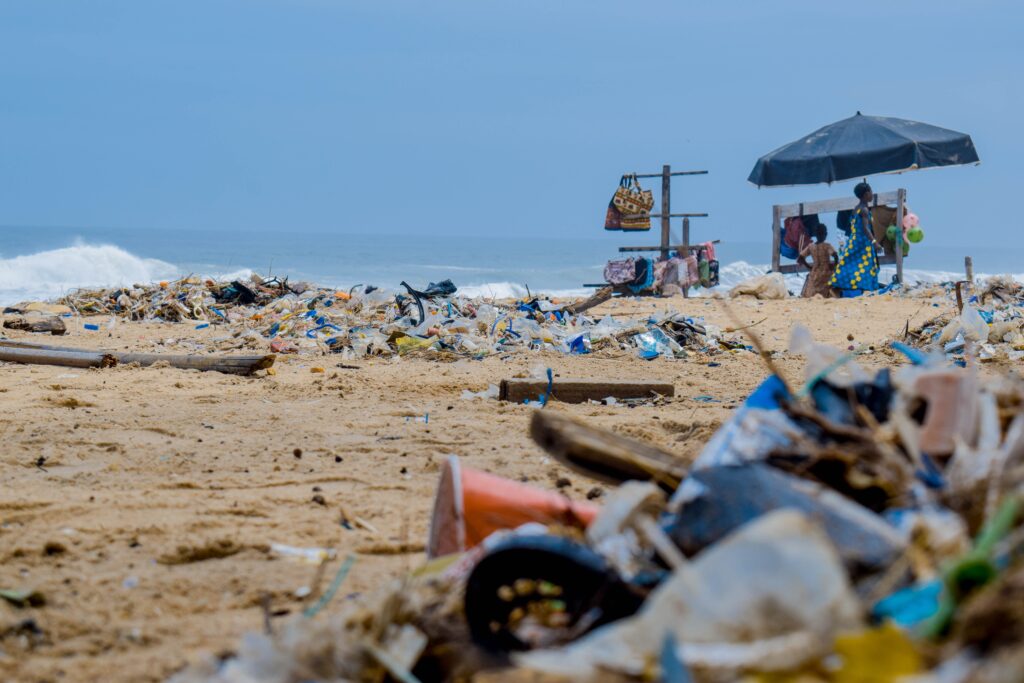The Impact of Fast Fashion on the Environment & How to Reduce it

Learn the detrimental effects of fast fashion on the environment & the steps you should take to reduce it for the well-being of nature.
The fashion industry has undergone a significant transformation in the last few decades with the rise of fast fashion. Fast fashion refers to the trend of quickly producing and selling low-cost clothes that are designed to be worn only a few times before being discarded. While fast fashion has made clothing more accessible and affordable, it has also had a significant impact on the environment.
The Impact of Fast Fashion on the Environment
The fast fashion industry has a significant impact on the environment. Some of how fast fashion impacts the environment include:
Water Usage & Pollution
The fashion industry is responsible for using 10% of the total water consumed by factories for production and cleaning purposes. For instance, the production of one kilogram of cotton requires 10,000 liters of water, and a single cotton shirt needs approximately 3,000 liters of water. In addition, the dyeing process involves the use of harmful chemicals that eventually contaminate our oceans. This process accounts for around 20% of the global wastewater, which builds up over time.
Plastic Microfibers

The leading source of plastic microfiber pollution in the ocean is synthetic materials, accounting for roughly 35% of all microplastics. To reduce costs, manufacturers often utilize low-quality materials, such as polyester, which is a plastic-based fiber that emits more carbon than cotton during production. Additionally, plastic takes a considerable amount of time to decompose in the ocean, and once it does, it forms a harmful and toxic substance that has detrimental effects on marine ecosystems.
Greenhouse Gas Emissions
The production of clothes requires the use of energy, which leads to the emission of greenhouse gases. These greenhouse gases contribute to climate change and have a significant impact on the environment.
Deforestation
The production of clothes often involves the use of materials such as cotton, which requires large tracts of land. This has led to deforestation, which has a significant impact on the environment.
How to Reduce the Impact of Fast Fashion on the Environment
Buy Less
The most effective way to reduce the impact of fast fashion on the environment is to buy less. Consumers can do this by buying high-quality clothes that are designed to last for a long time.
Choose Sustainable Brands
Clothes made from sustainable materials have a lower impact on the environment materials include organic cotton, linen, hemp, bamboo, and recycled materials. These materials are often produced using environmentally friendly methods and are biodegradable, which means they can decompose naturally without harming the environment.
In India, The Souled Store and Ed-a-Mamma are two leading sustainable apparel brands that collaborated with The Disposal Company to mitigate their environmental impact.
Repurpose or Donate Clothes
Instead of throwing away clothes after a few wears, consumers can repurpose them or donate them to charity. Repurposing clothes can involve altering them to fit better or turning them into something else, such as a bag or cushion cover. Donating clothes to charity ensures that they do not end up in landfills and can benefit someone else.
Rent your Clothes
Another way to reduce the impact of fast fashion on the environment is to rent clothes instead of buying them. This allows consumers to wear clothes only for the duration they need them and return them when they are done. Many online rental services now offer a range of clothes, including high-end designer clothes, making it easier for consumers to access fashionable clothes without harming the environment.
It is expected the rental market could increase by 65% to about £1.6bn worldwide by 2025.
Educate Yourself
Finally, consumers can educate themselves about the impact of fast fashion on the environment and make more informed choices. This can involve researching brands and materials, learning how to care for clothes to make them last longer, and staying up-to-date with sustainable fashion trends.
The Bottom Line
Fast fashion has had a significant impact on the environment, from water pollution to greenhouse gas emissions. However, there are ways to reduce the impact of fast fashion on the environment. By taking proactive measures to promote a sustainable fashion industry and adopting environmentally friendly consumer habits, we can effectively slow down the progression of climate change.
The Disposal Company is India’s first climate action platform which enables brands to go sustainable & plastic-neutral. Check here to contact us.




